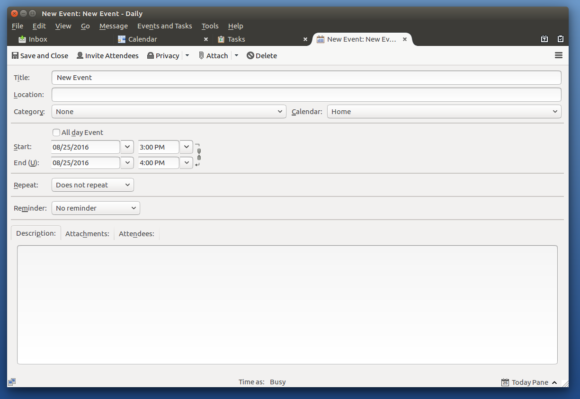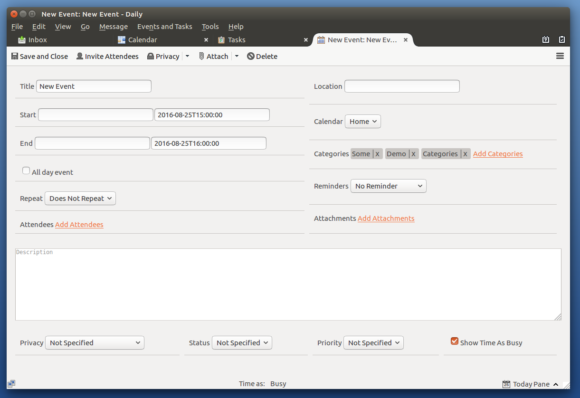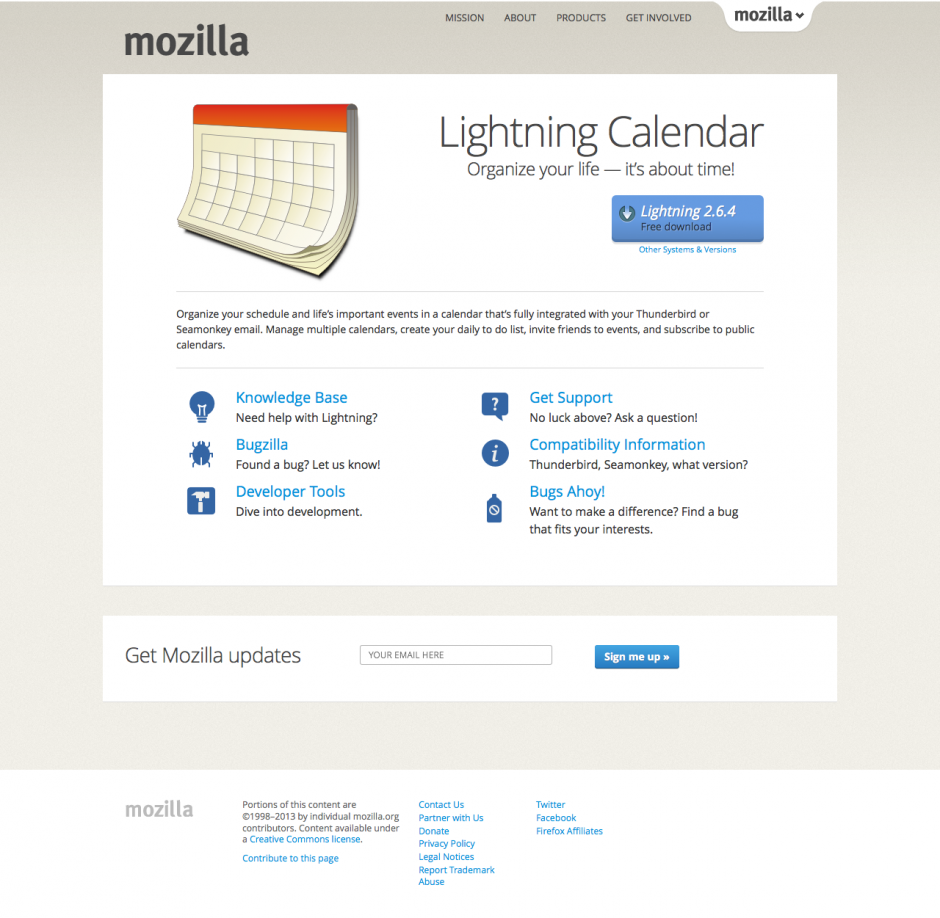As discussed in the previous post, the HTML-based UI for editing events and tasks in a tab is still a work in progress that is in a fairly early stage and not something you could use yet. (However, for any curious folks living on the bleeding edge who might still want to check it out, the previous post also describes how to activate it.) This post relates to its implementation, namely the use of React, “a Javascript library for building user interfaces.”
For the HTML UI we decided to use React (but not JSX which is often paired with it). React basically provides a nice declarative way to define composable, reusable UI components (like a tab strip, a text box, or a drop down menu) that you use to create a UI. These are some of its main advantages over “raw” HTML. It’s also quite efficient / fast and is a library that does one thing well and can be combined with other technologies (as compared with more monolithic frameworks). I enjoyed using and learning about React. Once you understand its basic model of state management and how the components work it is not very difficult or complicated to use. I found its documentation to be quite good, and I liked how it lets you do everything in Javascript, since it generates the HTML for the UI dynamically.
One of the biggest differences when using React is that instead of storing state in DOM elements and querying them for their state (as we currently do), the app state is centralized in a top-level React component and from there it gets automatically distributed to various child components. When the state changes (on user input) React automatically updates the UI to reflect those changes. To do this it uses an internal “virtual DOM” which is basically a representation of the state of the DOM in Javascript. When there are changes it compares the previous version of that virtual DOM with the new version to decide what changes need to be made to the actual DOM. (Because the actual DOM is quite slow compared to Javascript, this approach gives React an advantage in terms of performance.) Centralizing the app state in this way simplifies things considerably. Direct interaction with DOM elements is not needed, and is actually an anti-pattern.
One example of the power and flexibility that React offers is that I actually did the “responsive design” part of the HTML UI with React rather than CSS. The reason was that some of the UI components had to move to different positions in the UI when transitioning between the narrow and wide layouts for different window sizes. This was not really possible with CSS, at least not without overly complex workarounds. However, it was simple to do it with React because React can easily re-render the UI in any configuration you define, in this case in response to resizing the window past a certain threshold. (Once CSS grid layout is available this kind of repositioning will be straightforward to do with CSS.)
React’s different approach to state does present some challenges for using it with existing code. For this project at least it is not simply a matter of dropping it in and having it work, rather using it will entail some non-trivial code refactoring. Basically, the code will need to be separated out into different jobs. First there’s (1) interacting with the outside of the iframe (e.g. toolbar, menubar, statusbar) and (2) modifying and/or formatting the event or task data. These are needed for both the XUL and HTML UIs. Next there’s (3) updating and interacting with the XUL UI inside the iframe. Currently these things (1, 2, and 3) are usually closely intertwined, for example in a single function. Then there is (4) using React to define components and how they respond to changes to the app state, and (5) updating and interacting with the HTML UI inside the iframe (i.e. read from or write to the app state in the top-level React component). So there is some significant refactoring work to do, but after it is done the code should be more robust and maintainable.
Despite the refactoring work that may be involved, I think that React has a lot to offer for future UI work for Calendar or Thunderbird as an alternative to XUL. Especially for code that involves managing a lot of state (like the current project) using React and its approach should reduce complexity and make the code more maintainable. Also, because it mostly involves using Javascript this simplifies things for developers. When CSS grid layout is available that will also strengthen the case for HTML UI work since it will offer greater control over the layout and appearance of the UI.
I’ll close with links to two blog posts and a video about React that I found helpful:
- Removing User Interface Complexity, or Why React is Awesome
- Firefox Hello Desktop: Behind the Scenes – Flux and React
- Video: “Cleaning the Tar: Using React within the Firefox Developer Tools” talk by James Long
— Paul Morris




